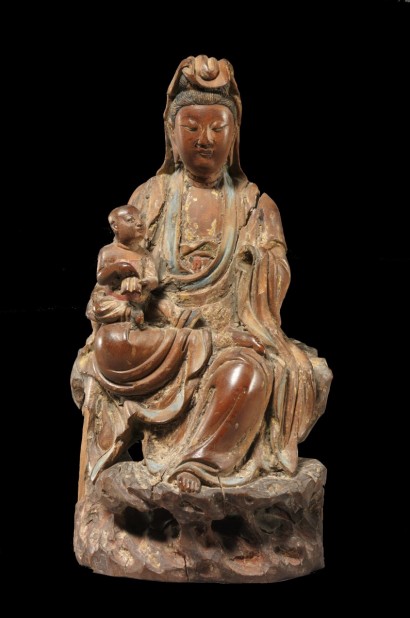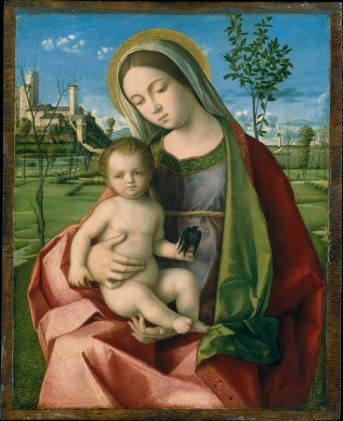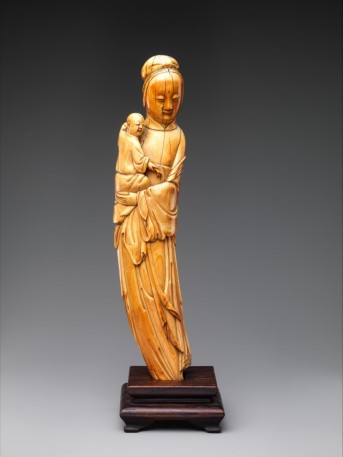China, late Ming or Qing dynasty, 17th–18th century; sandalwood with traces of pigment and gilding, single-woodblock construction; 5 3/8 x 2 3/4 x 2 1/2 in.; The Metropolitan Museum of Art, Rogers Fund, 1951, 51.15, photo: www.metmuseum.org.
Small in size, this sculpture was probably a precious object of personal devotion. The Lotus Sutra recounts that Avalokiteshvara bestows children of either sex, depending on the mother’s wishes. Despite this, the Chinese most often supplicated the Child-giving, or Songzi Guanyin, for male heirs, the only gender qualified for the prestigious profession of government service. Derived from the White-robed Guanyin, this form developed during the Ming dynasty and appears here as unambiguously feminine. She wears voluminous robes and cradles a child in her right arm; her left is now missing. Songzi Guanyin tenderly supports her tiny charge, as if to respond to her worshippers’ ardent desire for offspring.






